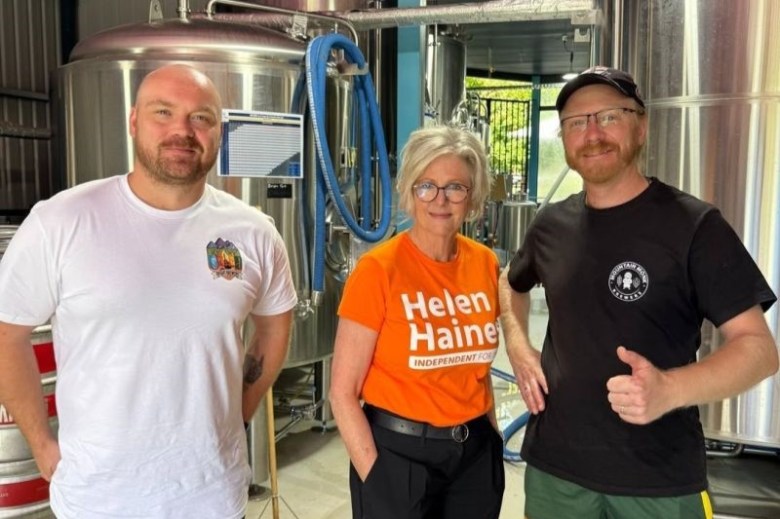Breweries have long been trailblazers. These are taking that tradition and running with it.
The post These Breweries Are Redefining Community, Collaboration, and Fermentation appeared first on CraftBeer.com.
Breweries have long been trailblazers. These are taking that tradition and running with it.
The post These Breweries Are Redefining Community, Collaboration, and Fermentation appeared first on CraftBeer.com.
Breweries have long been trailblazers. These are taking that tradition and running with it.
The post These Breweries Are Redefining Community, Collaboration, and Fermentation appeared first on CraftBeer.com.
Breweries have long been trailblazers. These are taking that tradition and running with it.
The post These Breweries Are Redefining Community, Collaboration, and Fermentation appeared first on CraftBeer.com.
Breweries have long been trailblazers. These are taking that tradition and running with it.
The post These Breweries Are Redefining Community, Collaboration, and Fermentation appeared first on CraftBeer.com.
Breweries have long been trailblazers. These are taking that tradition and running with it.
The post These Breweries Are Redefining Community, Collaboration, and Fermentation appeared first on CraftBeer.com.
Breweries have long been trailblazers. These are taking that tradition and running with it.
The post These Breweries Are Redefining Community, Collaboration, and Fermentation appeared first on CraftBeer.com.
Breweries have long been trailblazers. These are taking that tradition and running with it.
The post These Breweries Are Redefining Community, Collaboration, and Fermentation appeared first on CraftBeer.com.
Breweries have long been trailblazers. These are taking that tradition and running with it.
The post These Breweries Are Redefining Community, Collaboration, and Fermentation appeared first on CraftBeer.com.
Breweries have long been trailblazers. These are taking that tradition and running with it.
The post These Breweries Are Redefining Community, Collaboration, and Fermentation appeared first on CraftBeer.com.
Breweries have long been trailblazers. These are taking that tradition and running with it.
The post These Breweries Are Redefining Community, Collaboration, and Fermentation appeared first on CraftBeer.com.
Today, there is no family of hops more in vogue than those coming from New Zealand.
The post Tapping into New Zealand Hop Terroir appeared first on CraftBeer.com.
American craft breweries are finding surprising opportunities and eager consumers overseas.
The post Across the Atlantic: How U.S. Breweries Navigate the European Market appeared first on CraftBeer.com.
 IBA Chair Evin Craney met with Federal MP Dr Helen Haines to discuss the long-term viability of the industry and encourage others to have their voices heard.
IBA Chair Evin Craney met with Federal MP Dr Helen Haines to discuss the long-term viability of the industry and encourage others to have their voices heard. “Thirty different beers based on a fan base is a unique thing.”
The post Buffalo Pils Scores a Touchdown appeared first on CraftBeer.com.
“Thirty different beers based on a fan base is a unique thing.”
The post Buffalo Pils Scores a Touchdown appeared first on CraftBeer.com.
“Thirty different beers based on a fan base is a unique thing.”
The post Buffalo Pils Scores a Touchdown appeared first on CraftBeer.com.
“Thirty different beers based on a fan base is a unique thing.”
The post Buffalo Pils Scores a Touchdown appeared first on CraftBeer.com.
“Thirty different beers based on a fan base is a unique thing.”
The post Buffalo Pils Scores a Touchdown appeared first on CraftBeer.com.
“Thirty different beers based on a fan base is a unique thing.”
The post Buffalo Pils Scores a Touchdown appeared first on CraftBeer.com.
“Thirty different beers based on a fan base is a unique thing.”
The post Buffalo Pils Scores a Touchdown appeared first on CraftBeer.com.
“Thirty different beers based on a fan base is a unique thing.”
The post Buffalo Pils Scores a Touchdown appeared first on CraftBeer.com.
“Thirty different beers based on a fan base is a unique thing.”
The post Buffalo Pils Scores a Touchdown appeared first on CraftBeer.com.
“Thirty different beers based on a fan base is a unique thing.”
The post Buffalo Pils Scores a Touchdown appeared first on CraftBeer.com.
“Thirty different beers based on a fan base is a unique thing.”
The post Buffalo Pils Scores a Touchdown appeared first on CraftBeer.com.
“Thirty different beers based on a fan base is a unique thing.”
The post Buffalo Pils Scores a Touchdown appeared first on CraftBeer.com.
“Thirty different beers based on a fan base is a unique thing.”
The post Buffalo Pils Scores a Touchdown appeared first on CraftBeer.com.
“Thirty different beers based on a fan base is a unique thing.”
The post Buffalo Pils Scores a Touchdown appeared first on CraftBeer.com.